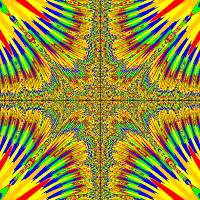Hey I am currently trying to create a brickbreaker game and struggling to find a way to get the ball to bounce off the walls, panel, and bricks. Any help would be appreciated. This is my current code: import greenfoot.*;
import greenfoot.*;
/**
* Write a description of class Ball here.
*
* @author (your name)
* @version (a version number or a date)
*/
public class Ball extends Actor{
private int ballX;
private int ballY;
private int oldEdge;
private int vel;
/**
* Move the ball. Then check what we've hit.
*/
public void act()
{
move(5);
setRotation(180);
}
public void move()
{
setLocation (getX() + ballX, getY() + ballY);
checkWalls();
checkBlock();
}
public void checkWalls()//public int atWorldEdge()
boolean atXEdge = getX() < 10 || getX() > getWorld().getWidth()-10;
boolean atYEdge = getY() < 10 || getY() > getWorld().getHeight()-10;
if (atXEdge || atYEdge) move(-5);
if (atYEdge) setRotation(360-getRotation());
if (atXEdge) setRotation(540-getRotation());
}
public void turnAtFloor()
{
if (getY() + getImage().getHeight()/2>=getWorld().getHeight() ) {
vel.reverseY();
}
}
public void turnAtRightWall()
{
if (getX() + getImage().getWidth()/2>=getWorld().getWidth() ) {
vel.reverseX();
}
}
public void turnAtRoof()
{
if (getY() + getImage().getHeight()/2<=getWorld().getHeight() ) {
vel.reverseY();
}
}
public void turnAtLeftWall()
{
if (getX() + getImage().getWidth()/2<=getWorld().getWidth() ) {
vel.reverseX();
}
}
/**
* Check whether we're out (bottom of screen).If not out at bottom
* then check if we have completed the level.
*/
public void checkBlock()
{
Actor brick = getOneIntersectingObject(Bricks.class);
if (brick != null)
{
ballY = -ballY;
}
}
//End of Borrowed
public void move(int dist)
{
setLocation (getX() + dist, getY());
}
public void release()
{
ballX = Greenfoot.getRandomNumber(11) - 5;
ballY = -5;
}
}




